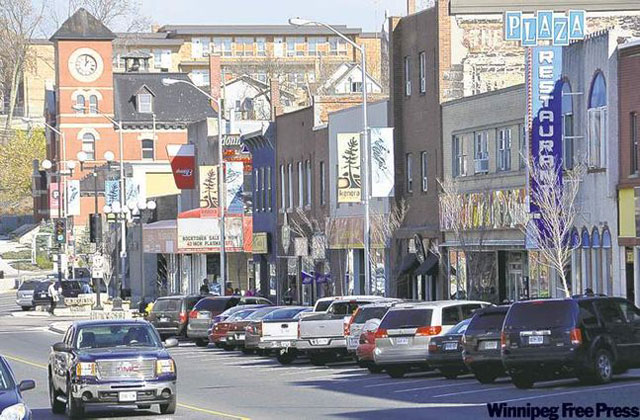
Anyone who has seen the Disney film Cars knows the sad story of the fictional town of Radiator Springs. The once-lively stop on Route 66 was effectively erased from the map when a new freeway was built bypassing the town. The economy crashed. The tire shop couldn't sell tires, the hotel couldn't rent rooms and the sleepy main drag fell into disrepair.
The city of Kenora, Ont., was faced with the possibility of this story becoming a reality when in 1990 the decision was made to build a bypass on the Trans-Canada Highway. This new road would divert 3,500 vehicles every day away from the city's picturesque main street. Coupled with the closing of the paper mill, the city's largest employer for 80 years, Kenora seemed destined to become a real life Radiator Springs.
The economic challenges facing the businesses of downtown Kenora were compounded by the suburban big box retail invasion that has devastated small business in cities and towns across North America. Walmart, the poster child for this phenomenon, even set up shop on the city's east side.
In reaction to these pressures, a group of forward-thinking business leaders and elected officials began to implement creative long-term urban design strategies that would capitalize on the region's tourism potential and move the city in a new, more prosperous direction. A vibrant and attractive downtown was identified as a key component of the makeover, setting the backdrop for a quality-of-life marketing campaign that could draw new investment, business and residents.
The Harbourtown Centre Committee was created and charged with developing a downtown revitalization plan that would identify goals and implement strategies to redefine the city centre. In an effort to ensure public awareness and support for the project, an extensive consultation and communication process was undertaken.
To capitalize on the historic flavour of the downtown, a new heritage committee began to identify and advocate for the protection and rehabilitation of historic buildings through property tax incentives, public grants and low-interest loans. A Façade Improvement Program was set up to provide funding to help property owners restore their buildings along Main Street.
Costing $25 million, a first phase of the revitalization plan, dubbed The Big Spruce, began construction in 2008. Designed by Winnipeg's Hilderman Thomas Frank Cram Landscape Architects, the lakefront was redeveloped into park space and the buildings on Main Street were opened to the waterfront and its newly created boardwalk.
New public docks, historic street lighting, planters, benches and widened sidewalks were installed. Diagonal parking and a traffic circle on Main Street now help to control the flow of vehicles, enhancing the pedestrian experience.
No longer a dusty mill town or overgrown truck stop, the result of this 'big picture thinking' has been a transformation of Kenora's image and attitude. With the heavy trucks gone and a new pedestrian-friendly streetscape in place, Main Street is now lined by trendy shops with names like Urban Shag, Keric Funk and even a Chip and Pepper boutique.
Kenora's downtown has been redefined through visionary planning and architectural guidelines and has already begun to act as a catalyst in attracting new business and residential development to the city.
As Winnipeggers close their Ontario cottages for the season and head home to a civic election, they might hope for candidates that will take inspiration from Kenora's experience and demonstrate the same imagination and commitment to using architectural and urban design strategies as a tool of economic development. There are a number of related questions that can be asked of our own candidates.
-- How can we maximize the impact of the Canadian Museum for Human Rights as a development catalyst for the downtown as a whole?
-- How can we preserve historic neighbourhoods while encouraging growth and appropriate new construction?
-- What initiatives or government policies will effectively attract private sector development to the downtown and away from suburban locations?
-- How can we control river levels in the city to support development on valuable waterfront property?
-- What public incentives will effectively promote infill and downtown residential growth, increasing density and curbing urban sprawl?
Questions of urban design are often overlooked during civic elections that tend to focus on concerns of crime, taxes and roads. In Kenora, solutions to these types of issues were successfully used to transform the city's image, economy and quality of life. This might serve as motivation for Winnipeg's next political leaders to approach these and other urban planning issues with comparable dedication and long-term vision.
Brent Bellamy is senior design architect for Number Ten Architectural Group. Email him at Bbellamy@numberten.com.
Republished from the Winnipeg Free Press print edition October 18, 2010 B6